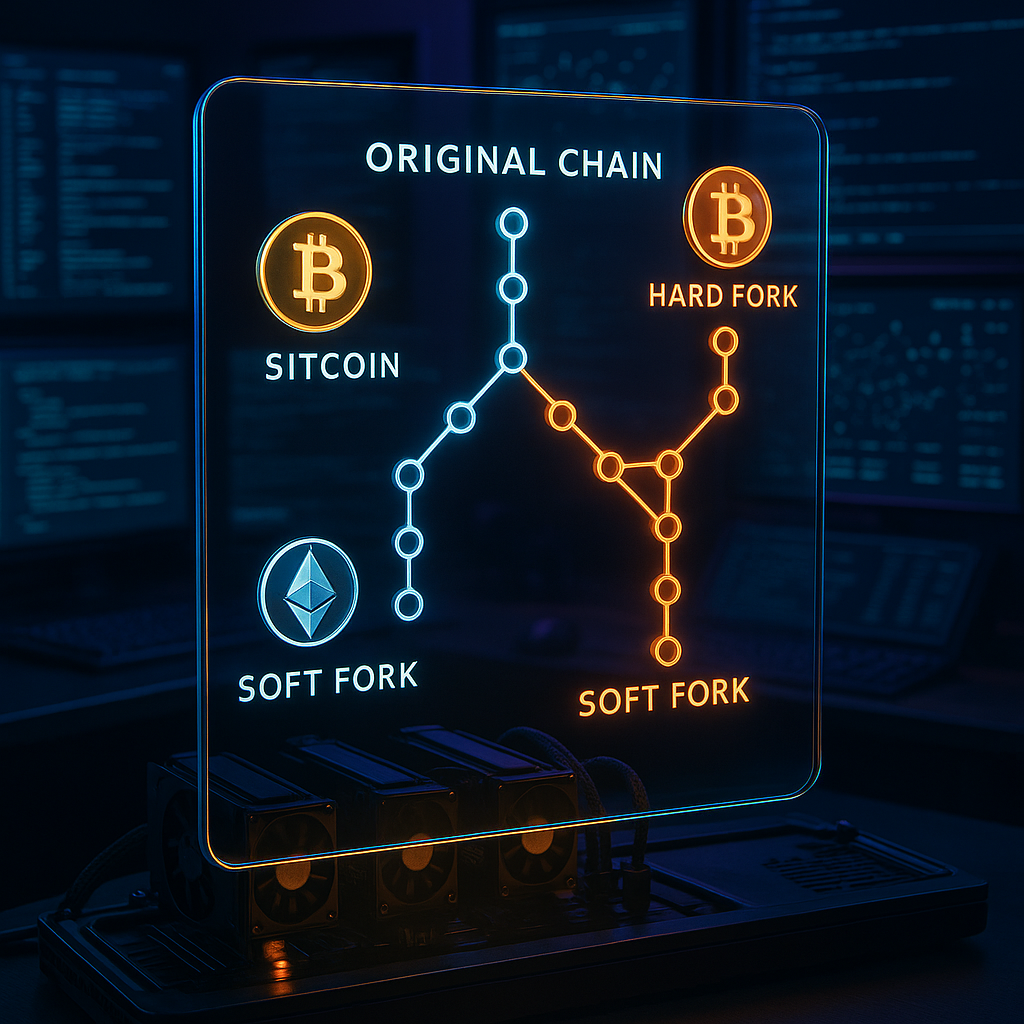Key Takeaways
- Keep your coins off the internet for true safety. Cold storage wallets store your crypto offline, rendering them immune to online hacks, phishing scams, and malware that commonly target hot (online) wallets. This fundamental step dramatically increases your digital asset protection.
- Ownership means control: You hold your own keys. Secure wallets such as hardware and paper wallets place complete control in your hands, ensuring that exchanges or third parties cannot freeze or seize your assets. This autonomy is the essence of true crypto ownership.
- Hardware wallets offer the strongest, user-friendly protection. Devices like Ledger and Trezor give you secure offline storage with added PINs and recoverable backup phrases. They combine resilient protection with accessibility, making everyday security not just possible but practical.
- Paper wallets are simple but require uncompromising care. Printing or writing down your private keys keeps them fully offline, but losing, damaging, or accidentally exposing them can result in permanent loss of funds. Handle with the diligence reserved for your most valuable assets.
- Never share your recovery phrase, ever. The recovery (seed) phrase is the ultimate key to your wallet. Anyone with access can claim all your funds, so protect it as you would your most irreplaceable possessions. This single rule cannot be emphasized enough.
- Regular backups and safe storage are your security foundation. Always maintain up-to-date backups of your wallet and recovery phrases, storing them in multiple, highly secure physical locations (avoiding digital copies). This ensures continued access in the event of loss, damage, or disaster.
- Understand the trade-offs: Convenience vs. security. Cold wallets provide unmatched long-term safety but are less convenient for frequent transactions, while hot wallets offer ease of use at the cost of vulnerability. Choosing the right solution means aligning security with your usage patterns.
With these core principles guiding your approach, you’ll be well-prepared to make informed, confident choices for crypto safety. Now, let’s delve into the world of secure crypto wallets to understand how cold storage can protect your digital wealth and set you up for long-term success.
Introduction
Stepping into the world of cryptocurrency brings both exciting opportunities and serious security responsibilities. Losing access to your crypto can happen in a flash, sometimes through a simple misplaced password or a compromised online wallet. This is why understanding robust security techniques is not a nice-to-have, but an essential skill for anyone entering the crypto space.
A secure crypto wallet represents more than just a storage tool. It is your gateway to true asset ownership, shielding your coins from hacks, online theft, and the evolving risks that permeate the digital landscape. In this guide, you will find practical advice on fundamental wallet choices (like hardware versus paper wallets), and learn core security principles that empower you to confidently protect your tokens now and into the future.
As you implement best practices and learn the nuances of digital ownership, you’ll discover how the right wallet strategy can transform anxiety into confidence and make crypto not just accessible, but empowering.
Stay Sharp. Stay Ahead.
Join our Telegram Group for exclusive content, real insights,
engage with us and other members and get access to
insider updates, early news and top insights.
 Join the Group
Join the Group
Understanding Secure Crypto Wallets
At its core, a secure crypto wallet is your personal stronghold in the digital economy, acting much like a sophisticated vault for your blockchain-based assets. Unlike traditional bank accounts, crypto wallets do not actually hold your tokens. Instead, they secure the private keys that represent ownership and enable you to interact safely with the blockchain.
Private and Public Key Management
The heart of any crypto wallet is key management. Your private key serves as your digital signature, authorizing transactions and granting access to your holdings. It is the master password to your crypto universe. Your public key, derived from the private key, is used to generate your wallet address, much like sharing your email address for receiving messages. It enables secure deposits without exposing sensitive information.
- Private Key: Must always be kept secret. If compromised, your assets are at immediate risk.
- Public Key: Safe to share. This is used to generate your wallet address and receive funds.
- Wallet Address: Generated from your public key, serves as the destination for incoming cryptocurrency.
Mastering the difference between public and private keys is foundational for maintaining security and preventing accidental exposure.
Custodial vs. Non-Custodial Wallets
Before narrowing down your wallet options, it is vital to understand the distinction between custodial and non-custodial solutions, as this choice defines your level of control and risk.
Custodial Wallets:
These are provided by exchanges or third-party platforms, similar to how banks manage your money. With custodial wallets, the provider holds your private keys.
- Advantages: Easier onboarding, simpler recovery options, and often more user-friendly for beginners.
- Drawbacks: Increased risk of platform hacks or business failure. Users do not have true control, and assets can be frozen or lost if the provider is compromised.
Non-Custodial Wallets:
Non-custodial wallets ensure only you have access to your private keys. They embody the core crypto principle, “Not your keys, not your coins.“
- Advantages: Full control over your assets, no reliance on external entities, maximal privacy.
- Drawbacks: Greater responsibility. Losing access to your private key or recovery phrase can mean permanent loss.
Selecting between custodial and non-custodial wallets is an important security decision that affects every interaction you have with cryptocurrencies. As you become more comfortable with these concepts, investigating more advanced protections becomes a natural next step.
Introduction to Cold Storage
Cold storage is widely recognized as the safest way to store cryptocurrencies for the long term. By keeping your private keys completely offline, cold storage removes the primary vector for digital attacks. There is no online connection for hackers or malware to exploit.
Offline vs. Online Storage: Comparing Your Options
To determine whether cold storage is the right fit, it is important to compare it with hot (online) storage in terms of convenience, usage scenarios, and vulnerabilities.
- Online Storage (Hot Wallets):
- Convenience: Designed for quick, flexible transactions.
- Risk Profile: Highly susceptible to cybersecurity breaches, phishing, and malware.
- Suitable For: Smaller balances, frequent trading, and day-to-day spending.
- Examples: Exchange wallets, browser-based wallets, mobile crypto apps.
- Offline Storage (Cold Wallets):
- Security: Offers maximum protection by physically removing the attack surface from the internet.
- Risk Profile: Immune to online threats, but requires careful handling and physical security.
- Best Use Cases: Storing significant amounts meant for long-term holding or savings.
- Examples: Hardware wallets, paper wallets, air-gapped computers.
Practical Applications Across Sectors
While individual crypto investors and long-term holders have traditionally led the adoption of cold storage, its applicability extends further.
- Long-term investors: Secure significant holdings using cold storage to eliminate cyber risk.
- Active traders: Keep trading capital in a hot wallet for convenience, while transferring larger reserves to cold storage.
- Businesses and institutions: Employ multi-signature hardware wallets for treasury operations, reducing internal and external theft risks.
- Charities and nonprofits: Use cold storage for donation reserves, ensuring that funds remain protected from online vulnerabilities.
- Education and research projects: Safeguard grant funds or project reserves offline to prevent loss due to software exploits.
While cold storage dramatically improves protection, it requires a balance of physical and operational security. This highlights the importance of selecting the implementation method that matches your comfort level and operational needs.
Hardware Wallets: The Gold Standard
Among cold storage tools, hardware wallets stand out for delivering enterprise-grade security in a user-friendly, portable format. These purpose-built devices keep your private keys on a secure element chip, never allowing them to touch internet-connected hardware, and offering multi-layered protections.
How Hardware Wallets Operate
- Initial Setup:
- Secure generation of private keys entirely offline within the device.
- Creation and recording of a unique backup recovery phrase (seed phrase).
- User-defined PIN setup for added device protection.
- Installation of the wallet’s management interface, often a companion app or desktop software.
- Security Features:
- Secure Element Chip: Prevents key extraction, even if physically compromised.
- Physical Transaction Confirmation: All outbound transactions require you to verify and approve them directly on the device, adding a crucial human checkpoint.
- PIN Entry & Anti-tampering Protections: Devices automatically lock or self-wipe after multiple incorrect PIN attempts. Casing is designed to show signs of tampering.
Daily Usage and Best Practices
To make the most of a hardware wallet, develop clear operational habits for both sending and receiving funds.
Sending Funds:
- Physically connect the device to your computer or mobile device.
- Open the manufacturer’s wallet management interface.
- Initiate your transaction securely within the wallet.
- Review and approve the transaction directly on the device’s screen and buttons before any funds move.
- Disconnect and return the device to secure storage once finished.
Receiving Funds:
- No need to connect your device, simply use your public wallet address.
- Share your address or QR code to receive deposits.
- Use a blockchain explorer to independently confirm incoming transactions.
Industry Use Cases
- Personal finance: Individuals securing life savings or large investments.
- Corporate treasury management: Businesses distributing signing authority through multi-signature hardware wallets.
- Professional trading desks in finance: Reducing exposure to hot wallet attacks by keeping majority assets in cold storage.
- Healthcare grant management: Securing program reserves or research funds via institutional-grade wallets.
- Legal and compliance sectors: Safely storing blockchain-based contracts or sensitive digital evidence.
Hardware wallets deliver a compelling mix of best-in-class protection, flexibility, and recoverability. For those seeking even more simplicity (or additional backup), paper wallets offer an alternative, albeit one requiring careful attention to physical security.
Stay Sharp. Stay Ahead.
Join our Telegram Group for exclusive content, real insights,
engage with us and other members and get access to
insider updates, early news and top insights.
 Join the Group
Join the Group
Conclusion
Achieving mastery in crypto wallet security is more than just a routine; it is a foundational skill that underpins success and confidence in the digital asset economy. By understanding the roles of private and public keys, making thoughtful choices between custodial and non-custodial options, and embracing proven cold storage strategies like hardware wallets, you set yourself apart from the majority of new participants.
This knowledge is not limited to individual investors. Businesses, educators, and nonprofit organizations alike can leverage these secure practices to protect funds, preserve trust, and unlock new opportunities in the Web3 ecosystem.
Looking to the future, as blockchain technologies mature and new digital frontiers emerge, those who adopt rigorous security habits today will be best positioned to thrive. Whether you aim to invest, build, or participate in the crypto space, the ability to safeguard your assets lays the groundwork for innovation, autonomy, and lasting wealth. The next chapter in decentralized finance will reward those who turn awareness into action and transform caution into empowerment.
Learn. Earn. Repeat. The path to confident crypto ownership starts with security, and your journey begins now with the right crypto wallet strategy.





Leave a Reply